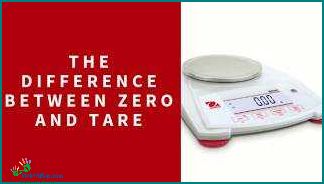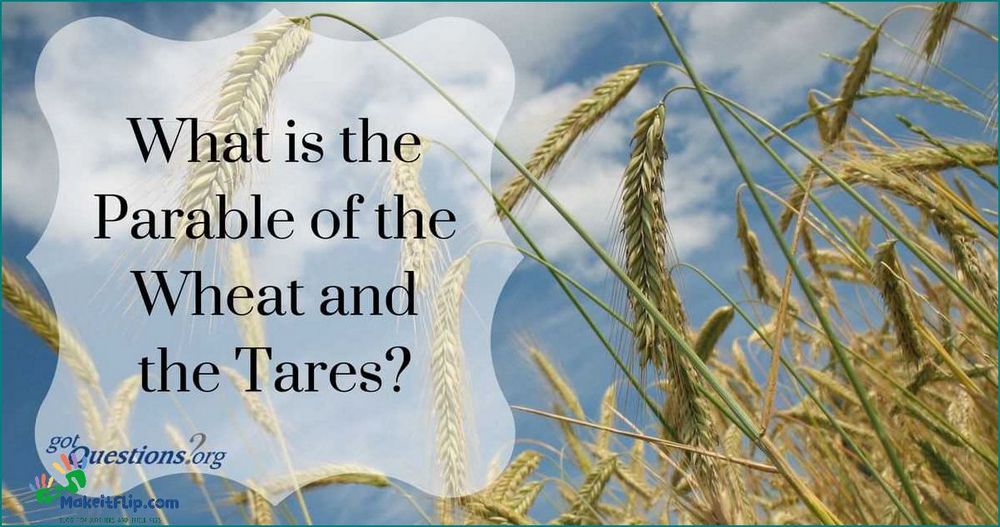Contents
- 1 Understanding the Difference Between Tear and Tare: An In-depth Comparison
- 1.1 Understanding Tear
- 1.2 Understanding Tare
- 1.3 FAQ about topic Tear vs Tare Understanding the Difference
- 1.3.1 What is the difference between tear and tare?
- 1.3.2 Can you give me an example of how to use tear in a sentence?
- 1.3.3 How is tare weight calculated?
- 1.3.4 Is it possible to tear something without using force?
- 1.3.5 What are some synonyms for the word tear?
- 1.3.6 What is the difference between tear and tare?
- 1.3.7 Can you give me an example of how to use tear in a sentence?
- 1.3.8 How is tare used in the context of weighing products?
- 1.3.9 Why is it important to understand the difference between tear and tare?
- 1.3.10 Are there any other meanings of tear or tare?
Understanding the Difference Between Tear and Tare: An In-depth Comparison

When it comes to measurements and packaging, there is often confusion and misunderstanding surrounding the terms tear and tare. Both words sound similar, but they have completely different meanings and uses.
The main difference between tear and tare lies in their purpose and function. Tear refers to the act of ripping or pulling something apart, while tare is a term used in weighing and measurement.
In the context of weighing, tare is the weight of an empty container or packaging that is subtracted from the total weight to determine the net weight of the contents. This is particularly important in industries such as food and pharmaceuticals, where accurate measurements are crucial.
On the other hand, tear is a verb that describes the action of ripping or pulling something apart. It is often used to describe the act of tearing paper, fabric, or any other material. Tear can also be used as a noun to refer to a hole or split in a material caused by tearing.
So, while tear and tare may sound similar, their meanings and applications are quite different. Understanding the distinction between these two terms is essential to avoid any confusion or misunderstandings, especially in the field of measurement and packaging.
Understanding Tear

In the context of packaging and measurement, tear refers to the act of ripping or separating a material, such as paper or plastic, into two or more pieces. This can occur accidentally or intentionally, depending on the situation.
One common misunderstanding is the confusion between tear and tare. While tear refers to the act of ripping, tare is a term used in weighing scales to measure the weight of packaging or containers. This difference in meaning can often lead to confusion, especially when discussing measurements and weights.
When using a scale, it is important to subtract the weight of the packaging or container, which is known as tare weight, in order to obtain an accurate measurement of the desired contents. This helps to ensure that the weight of the packaging does not affect the overall measurement.
However, when tear is mistaken for tare, it can lead to errors in measurements and misunderstandings. For example, if someone tears a piece of packaging while trying to remove it, they may mistakenly believe that they have removed the tare weight, resulting in an inaccurate measurement.
Therefore, it is crucial to understand the difference between tear and tare in order to avoid confusion and ensure accurate measurements in various contexts, such as packaging, weighing scales, and other measurement systems.
| Tear | Tare |
|---|---|
| Refers to ripping or separating a material | Refers to the weight of packaging or containers |
| Can occur accidentally or intentionally | Used in weighing scales for accurate measurements |
| Can lead to confusion and misunderstandings | Helps ensure accurate measurements by subtracting packaging weight |
What is Tear?

Tear is a term that is often misunderstood and confused with tare, especially in the context of weighing and packaging. The confusion arises due to the similarity in pronunciation and spelling of tear and tare. However, they have completely different meanings and applications.
When it comes to weighing, tear refers to the act of subtracting the weight of the packaging or container from the total weight of the goods. This is done to ensure that only the weight of the actual goods is measured. For example, if you are weighing a bag of flour on a scale, you would tear the scale to zero before placing the bag on it. This way, the scale will only measure the weight of the flour and not the weight of the bag.
On the other hand, tare refers to the weight of the packaging or container itself. It is used to determine the net weight of the goods by subtracting the tare weight from the gross weight. This is important in industries such as food, where the weight of the packaging needs to be accounted for in order to provide accurate nutritional information.
To summarize, the key difference between tear and tare lies in their meanings and applications in the context of weighing and packaging. Tear refers to subtracting the weight of the packaging from the total weight of the goods, while tare refers to the weight of the packaging itself. Understanding this difference is crucial to avoid any confusion or misunderstandings in various industries.
| Tear | Tare |
|---|---|
| Subtracting weight of packaging | Weight of packaging |
| Ensures accurate measurement of goods | Determines net weight of goods |
How is Tear Different from Tare?
When it comes to measurement and packaging, two terms that often cause confusion are “tear” and “tare”. While they may sound similar, they have different meanings and applications.
The term “tear” refers to the act of ripping or separating something into two or more pieces. It is commonly used to describe the action of tearing paper, fabric, or any other material. The word “tear” can also be used as a noun to refer to a drop of liquid that comes out of the eye when crying.
On the other hand, “tare” is a term used in weighing and packaging. It refers to the weight of the packaging or container that holds the actual product. When using a scale to measure the weight of a product, the tare weight is subtracted from the total weight to determine the net weight of the product itself. This is done to ensure accurate measurements and avoid any misunderstanding or confusion.
For example, when weighing a bag of flour, the scale may show the weight of the bag as well. By using the tare function on the scale, the weight of the bag can be subtracted, giving the actual weight of the flour inside. This is particularly important in industries such as food production and shipping, where accurate measurements are crucial.
In summary, while “tear” refers to the act of ripping or separating something, “tare” is a term used in weighing and packaging. Understanding the difference between these two terms can help avoid any confusion or misunderstanding, especially when it comes to accurate measurements.
| Tear | Tare |
|---|---|
| Act of ripping or separating something | Weight of the packaging or container |
| Can also refer to a drop of liquid from the eye | Used in weighing and subtracted from the total weight |
Examples of Tear in Everyday Life

Confusion between tear and tare can often arise in the context of packaging and measurement. Let’s take a look at some examples:
1. Packaging: When you purchase a new product, you may need to tear open the packaging to access the contents inside. This tearing action is necessary to remove the outer layer and reveal what’s inside.
2. Misunderstanding the Difference: Many people confuse tear and tare when it comes to weighing items. Tare refers to the weight of the container or packaging that holds the item, while tear refers to the act of ripping or separating something. It’s important to understand this difference to ensure accurate measurements.
3. Scale Calibration: When using a scale to weigh ingredients in cooking or to measure items for shipping, it’s crucial to tear the scale. This means resetting the scale to zero after placing the container or packaging on it. By doing so, you can accurately measure the weight of the item without including the weight of the container.
4. Weighing Produce: In grocery stores, tear is often used when weighing produce. For example, if you want to purchase 1 pound of apples, the scale needs to be torn to zero before placing the apples on it. This ensures that you are only paying for the weight of the apples and not the weight of the bag or container.
5. Tear Strips: Tear strips are commonly found on packaging materials such as envelopes, snack bags, or plastic wrap. These strips are designed to be torn open easily, providing quick access to the contents inside without the need for scissors or other tools.
Understanding the difference between tear and tare is essential in various everyday situations, especially when it comes to packaging, measurement, and weighing items accurately.
Understanding Tare

When it comes to weighing and packaging goods, the term “tare” is often used. Understanding the concept of tare is important to avoid confusion and misunderstandings.
Tare refers to the weight of the packaging or container that holds the goods being weighed. It is the weight of the empty container that is subtracted from the total weight to determine the net weight of the goods.
For example, if you have a bag of flour that weighs 5 pounds and the bag itself weighs 1 pound, the tare weight would be 1 pound. The net weight of the flour would then be 4 pounds.
Tare weight is commonly used in industries such as food, pharmaceuticals, and shipping. It allows for accurate measurement of the actual product without including the weight of the packaging.
Confusion can arise when people mistakenly use the term “tear” instead of “tare.” Tear refers to ripping or separating something, while tare refers to the weight of the packaging. This misunderstanding can lead to errors in weighing and packaging goods.
It is important to properly understand and use the term tare when it comes to weighing and packaging goods. By subtracting the tare weight from the total weight, you can accurately determine the net weight of the product, ensuring accurate measurements and packaging.
What is Tare?

In the context of weighing and measurement, tare refers to the weight of an empty container or vessel. It is the weight of the container that is subtracted from the total weight to determine the net weight of the contents. This is done to ensure accurate measurements and to avoid any misunderstanding or confusion.
When using a scale, the tare function allows the user to reset the scale to zero after placing the empty container on it. This way, when the contents are added to the container, the scale will only measure the weight of the contents and not include the weight of the container itself.
Tare is commonly used in various industries such as food packaging, manufacturing, and shipping. It allows for precise measurements and ensures that customers receive the correct amount of product without paying for the weight of the container.
For example, when buying fruits or vegetables at a grocery store, the scale used by the cashier has a tare function. The cashier would place a plastic bag on the scale, press the tare button to reset it to zero, and then start adding the fruits or vegetables to the bag. The scale will only measure the weight of the produce, excluding the weight of the bag.
Overall, tare is an important concept in weighing and measurement to accurately determine the net weight of a product and avoid any confusion or misunderstanding. It allows for efficient and fair transactions, ensuring that customers receive the correct amount of goods.
FAQ about topic Tear vs Tare Understanding the Difference
What is the difference between tear and tare?
Tear and tare are two words that are often confused due to their similar pronunciation, but they have different meanings. Tear is a verb that means to pull or rip something apart. Tare, on the other hand, is a noun that refers to the weight of a container or packaging material that is deducted from the total weight of a product.
Can you give me an example of how to use tear in a sentence?
Sure! Here’s an example: “She was so frustrated that she couldn’t help but tear the paper into tiny pieces.”
How is tare weight calculated?
Tare weight is calculated by weighing the empty container or packaging material before it is filled with the product. This weight is then subtracted from the total weight of the product and container together to determine the net weight of the product.
Is it possible to tear something without using force?
No, tearing something typically requires some level of force. It involves pulling or ripping apart a material, such as paper or fabric, by applying pressure or pulling it apart with your hands.
What are some synonyms for the word tear?
Some synonyms for the verb tear include rip, rend, shred, and split. These words all refer to the act of pulling or ripping something apart.
What is the difference between tear and tare?
Tear and tare are two different words with different meanings. Tear refers to the act of ripping or pulling something apart, while tare refers to the weight of a container or packaging that is subtracted from the total weight of a product.
Can you give me an example of how to use tear in a sentence?
Sure! Here’s an example: “She couldn’t hold back her tears when she heard the sad news.”
How is tare used in the context of weighing products?
In the context of weighing products, tare is used to subtract the weight of the container or packaging from the total weight of the product. This allows for an accurate measurement of the product’s weight.
Why is it important to understand the difference between tear and tare?
Understanding the difference between tear and tare is important because they are two different words with distinct meanings. Using the wrong word can lead to confusion or miscommunication.
Are there any other meanings of tear or tare?
Yes, tear can also refer to a drop of liquid that comes out of your eye when you cry, and tare can also refer to a weed that grows among crops.
I’m Diana Ricciardi, the author behind Makeitflip.com. My blog is a dedicated space for mothers and their kids, where I share valuable insights, tips, and information to make parenting a bit easier and more enjoyable.
From finding the best booster seat high chair for your child, understanding the connection between sciatica and hip pain, to exploring the benefits of pooping in relieving acid reflux, I cover a range of topics that are essential for every parent.
My goal is to provide you with practical advice and solutions that you can easily incorporate into your daily life, ensuring that you and your child have the best possible experience during these precious years.
